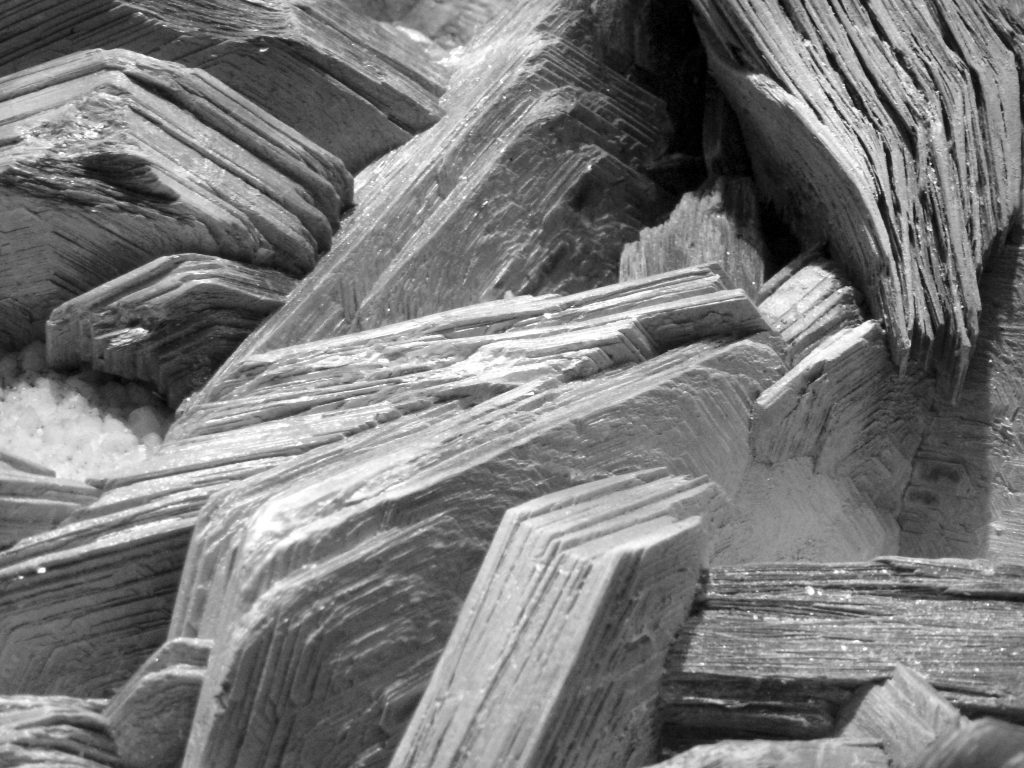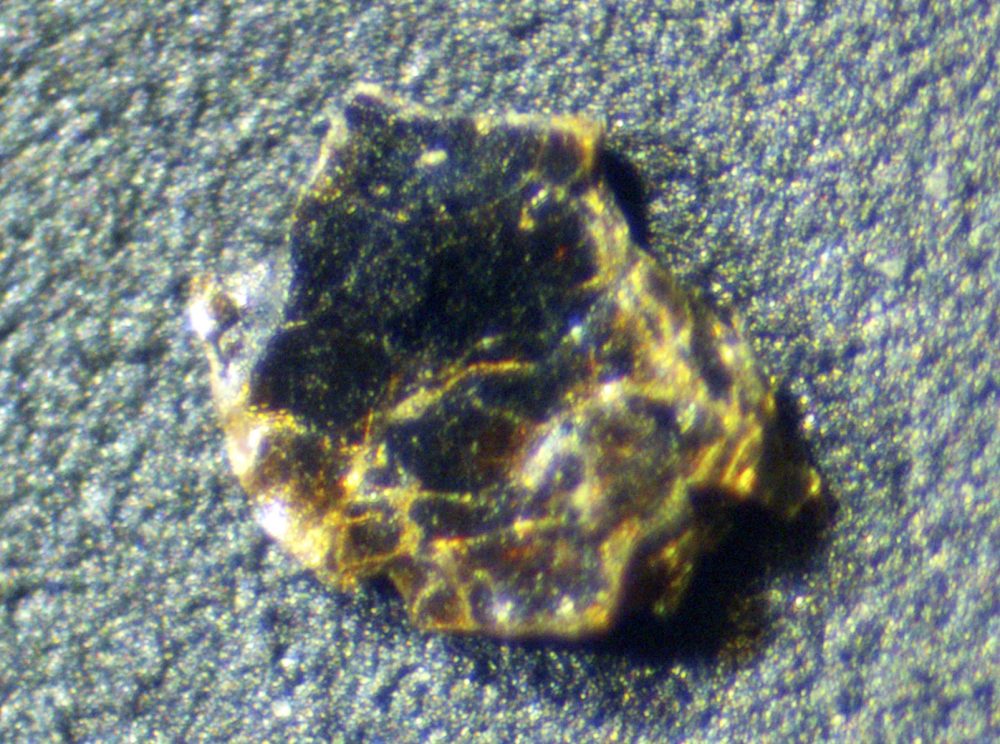Crushed and panned out some of that grey colored volcanic rock I collected two days ago. Appears to be plain old basalt. Before doing anything with it, I ran my Falcon over the material, just to see if I could get lucky. I didn’t although several pieces were metallic, although ferrous. Hard to tell what they are and iron related pieces are common seemingly everywhere a prospector goes.

—
I crushed and panned out some rocks to fifty mesh, producing a few gold glinting specks in the pan. Always assume pyrite or mica. I had found mica on the hill on my last trip but pyrite I suppose was possible. One fleck did interest me because it appeared corrugated and granular, not flat like mica.
—
The piece turned out to be mica, though. Didn’t need the scope. Looking at the piece on its side with a 10X loupe showed its platy character, that onion skin like texture that mica has, in the way it can be peeled back in sheets. I rendered the image below into monochrome.
—

By Pascal Terjan from London, United Kingdom - MicaUploaded by Magnus Manske, CC BY-SA 2.0, Link
—
I’m a total beginner with a microscope. I use this plastic lid with embossed lettering to orient me. I place a speck of something near some letter and I can then find the speck near the letter. Everything is reversed under my scope. Move something to the right and it goes to the left.

—
Chief problem with any microscope work is keeping stray animals from interfering. John Charles Fremont The Explorer was tremendously interested in my project and repeatedly tried to help. Alas, no help at all. I usually hook up the scope to my desktop computer since the microscope camera draws power from a USB port. I have not yet heard, however, my laptop’s fans come on. So, the draw must be low. My LED lights are powered by the mains, I wish they were dimmable.

—
Another view of my setup. Note the lettering of the lid on the computer screen that I mentioned before. This is a Chinese scope that I could afford. Not the best optics but an integrated digital camera. Without such an approach, you are forced to kludge together a scope with a digital camera that you might have, trying to get various lens adapters to work, finding the right lens to begin with, and so on. Nightmare.

—
Crushing out the bigger rocks on an empty road with my hand sledge and a small rock crusher.

—
Crushed pieces revealed a fair amount of quartz. That surprised me since none was visible before I broke the rocks down. But quartz is one of the biggest rock building minerals so perhaps this is not surprising. Perhaps this is not even basalt, rather something more granitic.

—
I will try to get back to the Pass tomorrow to get some samples from the gullies I mentioned in the last post I wrote at my personal writing site. Click here to go there.
https://thomasfarleyblog.com/2020/03/31/back-to-railroad-pass-clark-county-nevada/
—
The Alunnite Mine, Alunite Mining District, Clark County, Nevada, USA (Link to Mindat.org)
—
Clark County image from the:
Index of Granitic Rock Masses in the State of Nevada By FLORIAN MALDONADO, RICHARD W. SPENGLER, W.F. HANNA, and G.L. DIXON
Prepared in cooperation with the U.S. Department of Energy
A compilation of data on 205 areas of exposed granitic rock masses in Nevada
U.S. GEOLOGICAL SURVEY BULLETIN 1831
—

—
https://www.instagram.com/tgfarley/
Follow me on Instagram: tgfarley
—

